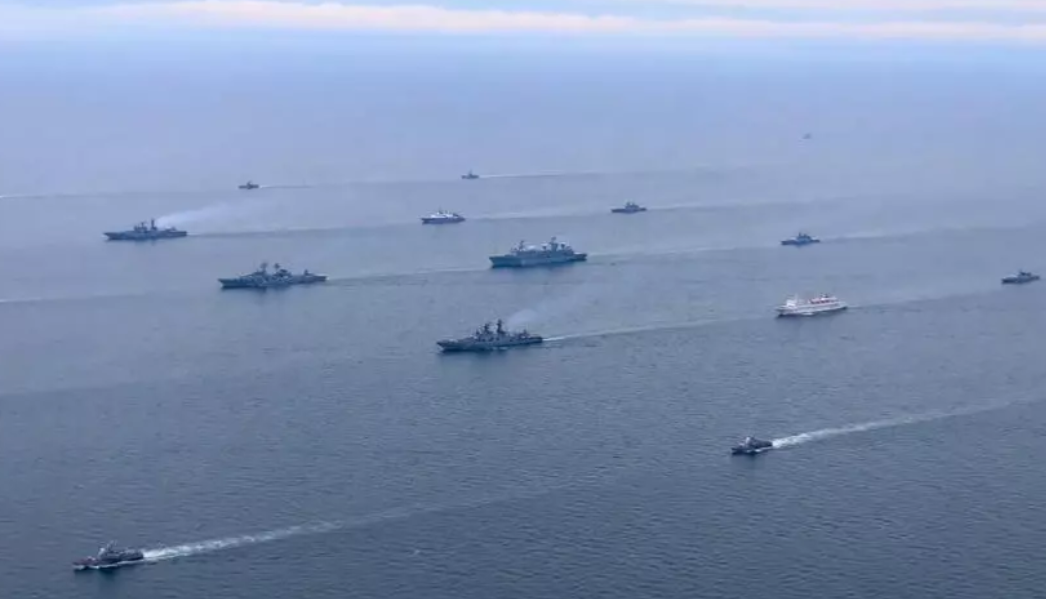Russia began its largest navy drills of the post-Soviet era on Tuesday, partnering with Chinese warships in a display of growing military collaboration between the two nations. The exercises, set to run until September 16, will feature over 400 warships, submarines, and other maritime vessel
Russian and Chinese warships launched joint drills in the Sea of Japan on Tuesday as part of a major naval exercise that will see Moscow navigate through the Northern Hemisphere and Pacific. This collaboration highlights the deepening military and economic ties between Russia and China, as they seek to challenge the U.S.-led global order.
President Vladimir Putin will officially open the “Ocean-2024” exercise and oversee the operations from a situation center in the Kremlin. The drills, which will run until September 16, involve over 400 warships, submarines, and support vessels. China has contributed four warships and a supply vessel to the exercise.
The broader drills will cover the Pacific and Arctic Oceans, as well as the Mediterranean, Caspian, and Baltic Seas, becoming a key operational and combat training event for the Russian military in 2024. The exercises will also include more than 120 aircraft and helicopters, about 7,000 units of military equipment, and over 90,000 personnel.
The Japanese defense ministry reported observing five Chinese naval ships entering the Sea of Japan over the weekend. Japan’s Self-Defense Forces monitored the vessels and conducted intelligence gathering, amid rising tensions due to China’s increasing military assertiveness and recent airspace incursions.
Last week, Japan lodged a protest after a Chinese naval ship entered its territorial waters.
Japan and Russia are also embroiled in a territorial dispute over the Kuril Islands, known as the Northern Territories in Japan, with relations between the two countries deteriorating further since the onset of the Ukraine conflict.
In addition, Japanese and Chinese vessels have had tense encounters in other regions, notably around the Senkaku Islands in the East China Sea, which Beijing refers to as the Diaoyus. Japan has reported sightings of Chinese coastguard ships, a naval vessel, and even a nuclear-powered submarine in these waters, leading to multiple confrontations between Japanese coastguard vessels and Chinese fishing boats.
In response to rising regional tensions, Japan’s defense ministry has requested a record 8.5 trillion yen ($59 billion) for the upcoming fiscal year as part of a five-year, 43-trillion-yen defense buildup plan extending through March 2028.


